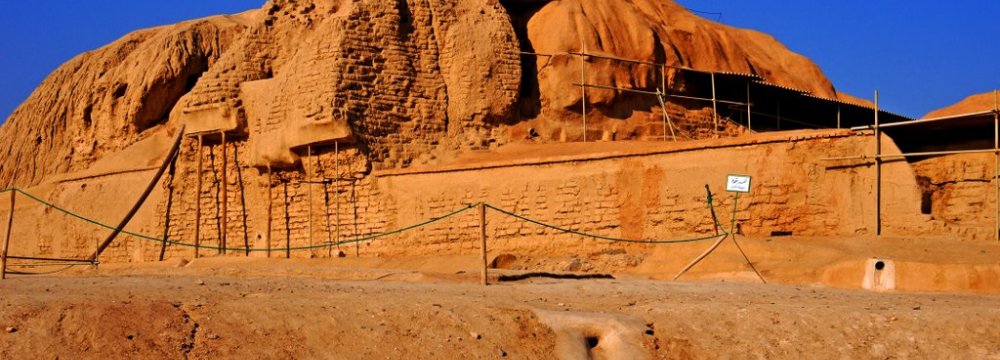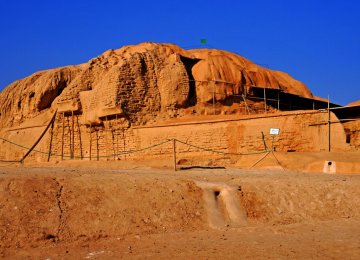Tepe Sialk is a large ancient archeological site in a suburb of Kashan, Isfahan Province. The civilization that inhabited this area is linked to Zayandeh River Culture dating back to 6th millennium BC, concurrent with Sumerian and Indus valley civilizations and Indus Valley civilization to west and east.
Tepe Sialk is comprised of two mounds: northern mound described as one of the earliest settlements on the Persian plateau, housing Sialks I and II settlements from 5800-5500 to 4300 BC; and southern mound formed 800 meters away to the south after a fire destroyed the northern village, housing Sialk III, IV, and V settlements from 4300 BC onwards. In 1933, a French Louvre delegation led by Dr. Roman Ghirshman, started exploration of the site. While browsing the site, they found many exquisite objects, reported Aftab News Agency.
At Sialk, the dead were painted in red ochre and buried under the floor of their homes. Among the remains a seal with a proto-Elamite inscription in the layers of Sialk IV, and the earliest depiction of a Near-Eastern man were discovered. The latter was in the form of a knife handle shaped like a man wearing a wrap around the waist and a cap. The use of a rough potters’ wheel and earliest forged copper have been ascertained. The settlement evidently consisted of huts made of tree branches, though the inhabitants were practicing rudimentary garden culture and had domesticated oxen and sheep.
In 2001, a new excavation was led by Dr. Malek Shahmirzadi. He discovered Sialk Ziggurat. The broken potteries and objects found are now preserved in the site’s museum.





